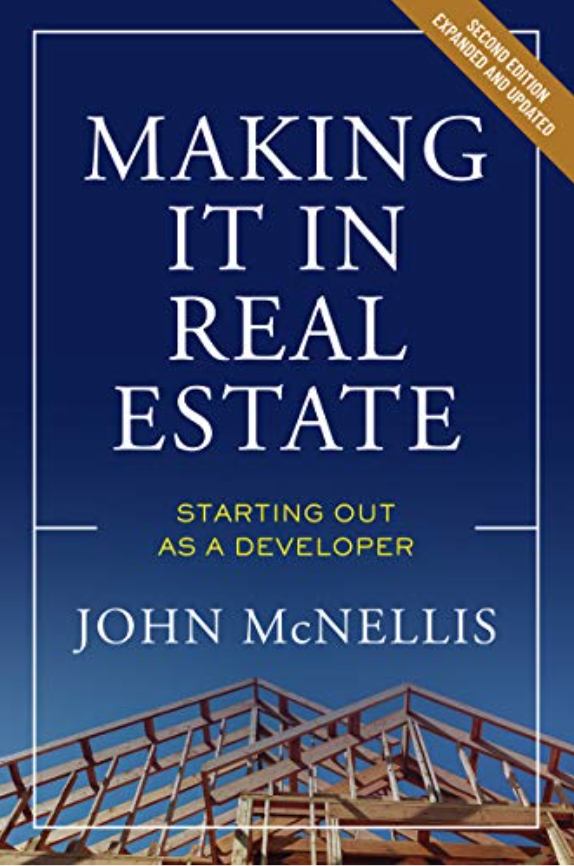To paraphrase a vulgar aphorism, self-delusions are like opinions—everybody has one. Some have many. Self-delusions are sometimes tragic—consider the starving anorexic who considers herself fat. Occasionally they are merely sad—picture the badly aging athlete certain he is good for another season. And some self-delusions are highly entertaining. Despite being a perennial finalist for “America’s Worst Cook,” my dear mother actually prided herself on her culinary skills.
Self-delusions in real estate are about as rare as fixed wrestling matches. It may be that only pandemic self-delusion can explain today’s pricing of top-quality real estate. It also may be that the usual suspect—greed—is a major factor.
According to data just released at the Fisher Center’s Policy Advisory Board meeting in Carmel, prime office buildings in the country’s most desirable cities (those with ocean views) are at an all-time high, 10 percent greater than their prior peak. 100 Spear Street, a non-descript San Francisco high-rise building at Spear and Mission, just sold for a yield below 4 percent. This building is not a city-defining landmark. Neither the Transamerica Pyramid nor the Chrysler Building, it stands out about as much as any cigarette in a pack, indistinguishable from every other building in the neighborhood to all but its architect. Yet it sold for a price that would have been unbelievable for a true world-class icon not that many months ago.
This pricing is not limited to high rises. Any well-located asset considered bulletproof as to vacancy and rental decline is on fire. First-class regional shopping malls are fetching the same stratospheric prices as freestanding McDonald’s restaurants (given America’s eating habits, these may actually be the safest bet).
Properties deemed “core” by investors hardly need a broker to command a record price. As used in real estate, the term “core” has become so imprecise as to be almost without meaning. Sometimes it signifies that the building so dubbed is within one of the uppermost cities for investing (NYC, SF, LA, DC, Boston and forget the rest). Sometimes it means that the building is just in any city’s best neighborhood. Occasionally, it refers to the economic strength of the building’s tenants. And it can also just mean that the building in question matches nicely with the rest of the investor’s portfolio (another junkyard to an owner of junkyards would be a core asset). Brokers use it as shorthand to message interested buyers, “I guarantee this is a triple-A, no-risk, you’re-never-going-to-lose deal.”
And therein lie both the sales pitch (a lot of self-delusions are mid-wived by brokers and consultants) and the rub.
The sales pitch is simple: “Mr. Clever Investor, because you’re getting .0001 percent on your money in the bank and only 1.82 percent with U.S. Treasury bonds, you really should buy this completely waterproof building for a 4 percent return. This core asset is as safe as treasuries, plus it’s a brilliant inflation hedge.”
It may be true that you can’t cheat an honest man, but cheating a greedy one is a piece of cake, and no one swings at this pitch unless he’s desperately chasing yield.
The clever investor might, however, object to the pricing by pointing out that even the best real estate—say a midtown Manhattan trophy building that Donald Trump had nothing to do with—historically sells for less than corporate Baa bonds. And that today, that bond rate is 4.66 percent. The indefatigable broker will concede the poor initial return, but swear the overall return on investment (the internal rate of return or “IRR”) will be splendid if one holds the building 10 years and sells it then for a whopping profit. (See “Lies, Damn Lies and the IRR” in The Registry’s September 2011 issue for an exposition of the voodoo known as the IRR).
This is where the self-delusions come in, however induced. Anyone with enough money to buy real estate must know that interest rates are bound to rise. So a buyer has to convince herself she can somehow out-race the avalanche of falling prices that will rumble right behind rising interest rates.
On the plus side, there are a lot of fun choices: “We’ll get out of this deal before rates run up.” Or, “Even though the building is fully leased, we, with our special expertise, will painlessly double rents as the leases turn over.” Or, “We’re buying this for the next generation.” Or, back to the IRR—the calculation that sunk a thousand ships—“Our fully leveraged IRR yield will be at least 8.5 percent no matter what happens to rates.”
Far better—or at least much cheaper—to be self-deluded about one’s youthful looks or charm or killer jump shot.
Our next column explores whether even the best real estate is ever truly safe.


